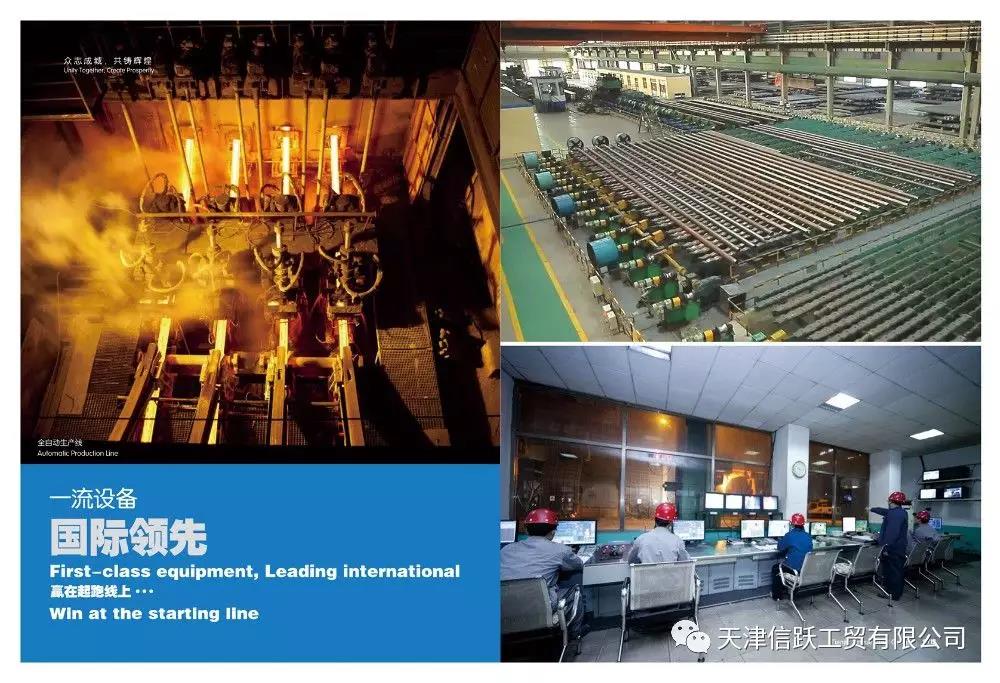NDT Testing
Oct. 24, 2019
According to the steel pipe production standards, the requirements for testing and nondestructive testing is a very important over the years, Tianjin Xinyue keep the principle of the responsible for customer, in every single process of steel tube production, strictly control the production quality,pay more attention than many other factories for NDT testing, today we share with you about the knowledge of NDT testing:

There are mainly five kinds of commonly used nondestructive testing: UT(Ultrasonic Testing), RT(Radiographic Testing), MT(Magnetic particle Testing),(Penetrant Testing),(Eddy current Testing).
The Principle of Ultrasonic Testing
The principle of ultrasonic testing is to make use of the fact that ultrasonic waves can propagate at a certain speed and direction in materials, and will produce reflection when encountering heterogeneous interfaces with different acoustic impedance (such as defects or the bottom surface of the object to be tested, etc.), which is used for ultrasonic testing. According to the reflected wave of the defect, the position and approximate size of the defect can be determined. For plane defects such as cracks and interlayers, the flaw detection sensitivity is high.
The Principle of X-ray Testing
The most important application of X-ray inspection is to detect macroscopic geometric defects (flaw detection) inside the test piece, which is applicable to most materials and product forms, such as weldments, castings, composite materials, etc. The radiographic film can generate visual images of defects on the internal structure of the material, and the detection results can be directly recorded and stored for a long time. The detection rate of volume defects, such as pores and slag inclusion, is very high. For area defects, such as cracks and incomplete fusion, if the camera angle is not appropriate, it is easy to miss detection. The limitation of X-ray detection lies in its high cost and its harmful effects on human body. Sometimes radiographic testing is also used to detect the size of the reserved gap at the joint, such as the reserved gap at the socket joint.
The Principle of Magnetic Particle Testing
Magnetic particle inspection is to magnetize the workpiece to be inspected by applying a magnetic field to form a leakage magnetic field on the surface and near-surface defects of the workpiece, and magnetic particles applied on the surface of the workpiece can be adsorbed to form concentrated magnetic marks with the presence of magnetic poles, thus showing the existence of defects. Magnetic particle testing is mainly used to detect defects on or near the surface of magnetic materials.
The Principle of penetration testing
Permeation detection is to use a liquid dye on the surface of the test material. The liquid dye enters the cracks on the surface of the material due to "capillary action". Then the liquid dye on the surface of the material is scrubbed, and then a certain developing agent is applied to the surface of the material to be tested to penetrate into the cracks and color the cracks so as to appear. The liquid dye used for penetrant detection is easily identifiable colored liquid, and can also be yellow/green fluorescent color liquid that requires special light to appear. Permeation detection can be widely used to detect surface opening defects or surface cracks, but cannot detect buried defects or closed surface defects.
The principle of Eddy current testing
Eddy current testing is a nondestructive testing method based on electromagnetic induction principle, which is suitable for conductive materials. It uses the change of various factors (such as shape, size and defects) of the conductor itself to cause the magnitude change of induced current, and uses this phenomenon to judge the defect position of the conductor.
In short, ultrasonic testing and radiographic testing are mainly aimed at the internal defects of the tested object, while magnetic particle testing, penetration testing and eddy current testing are mainly aimed at the surface and near-surface defects of the tested object.
Written by Tony



